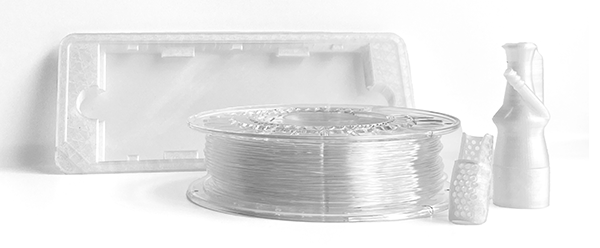
26 January 2024
PETG : 3D Printing Filament
Focus on PETG
In this guide, we explore PETG in detail, with background information, printing tips, a presentation of our services, examples of use, and a comparison with a common alternative, ABS.
In addition, you can find an infographic on the subject available on our social networks.
First of all, what is PETG?
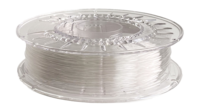
It’s an amorphous, rigid thermoplastic that shares the same chemical composition as polyethylene terephthalate (PET), which is well known for its applications in the polymer industry. It is highly valued for its ease of use, chemical resistance and suitability for applications in contact with skin and food.
Some general information about PETG
PETG is one of the most widely used polymers in the additive manufacturing sector. It combines the ease of 3D printing of PLA with the strength of ABS, offering a unique balance. This amorphous, 100% recyclable material is derived from PET by adding glycol at the molecular level. This modification gives it greater strength, durability and flexibility while retaining its chemical composition.
Key characteristics of PETG
- Hardness
- Mechanical resistance
- Transparency and visibility
- Ease of extrusion
- Skin and food compatibility
- Our 3D printing tips for PETG
Our 3D printing tips
For optimum results with PETG, follow our printing tips:
- Extrusion temperature: Set the extrusion temperature between 230°C and 250°C, according to the manufacturer’s specifications.
- Printing platen: Use a heating platen between 75°C and 85°C.
- Print speed: Choose a moderate speed, generally between 40 mm/s and 70 mm/s.
- Cooling: Minimise cooling to avoid solidifying too quickly.
- Shrinkage: Set shrinkage parameters correctly to avoid burrs.

What we offer at Lattice Services
At Lattice Services, we offer you high quality PETG filaments, available in 1.75 mm or 2.85 mm spools, weighing 500g. The price is €54.90 incl. VAT (€45.75 excl. VAT) per spool.
Our Uses Cases
PETG has a wide range of applications in various sectors. Here are a few examples:
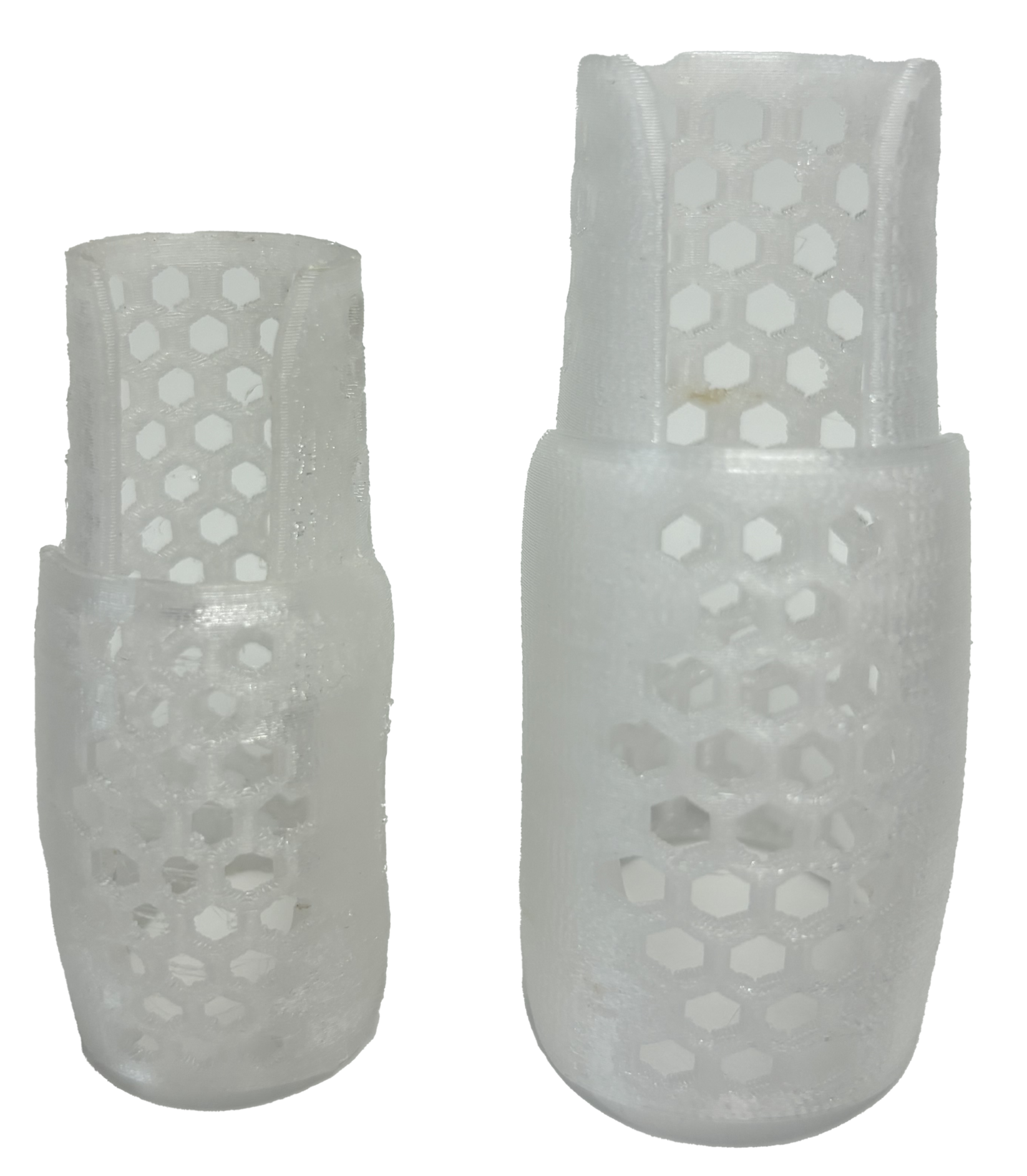
- Orthotics: Thanks to its mechanical strength, it is ideal for creating orthotics. It is suitable for contact with the skin, making it a quality choice.
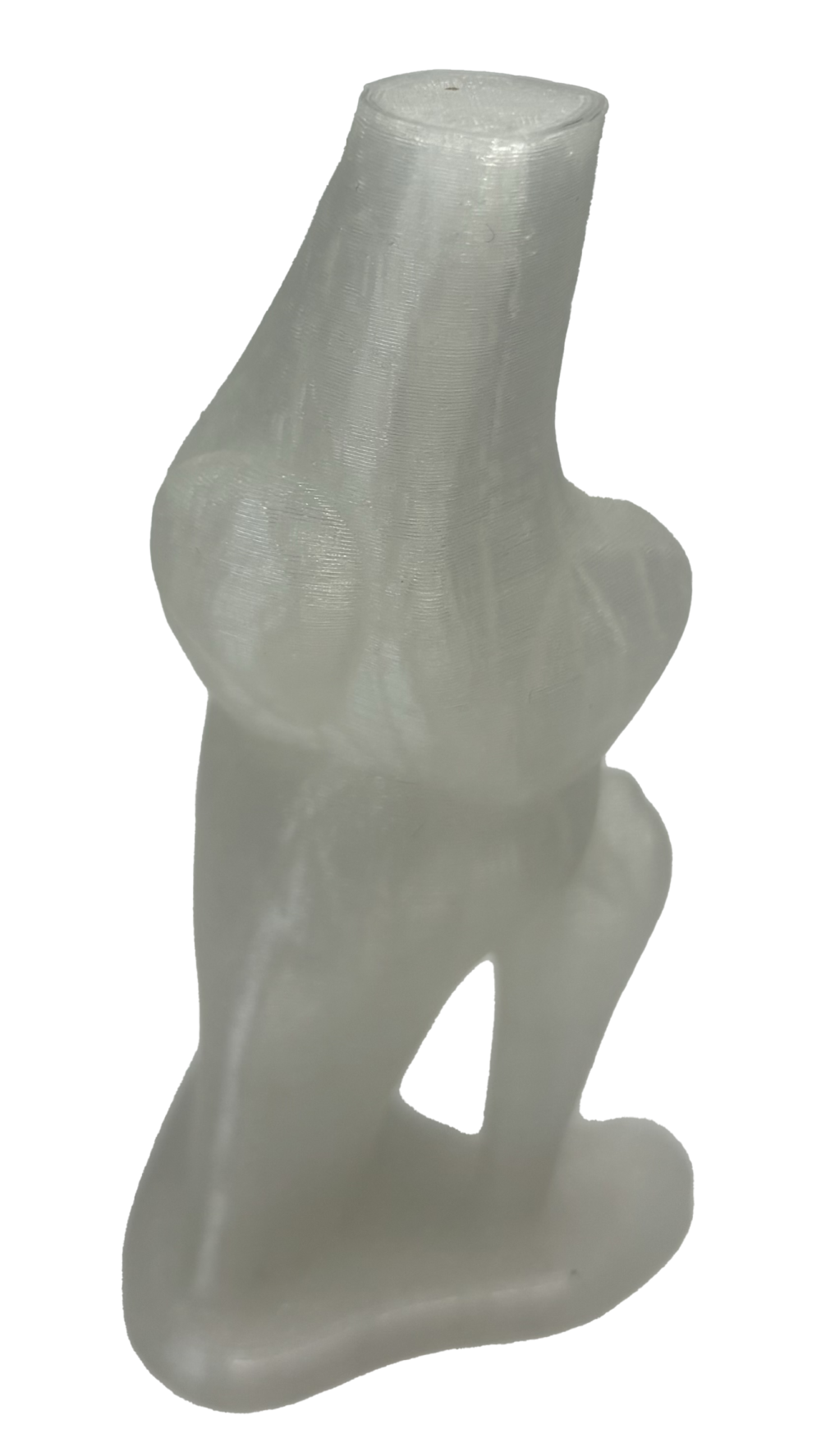
- Models of parts of the human body: Its flexibility and precision make it an ideal choice for creating models representing the human body.

- Prototype blister packs for medical devices: Its chemical resistance makes it suitable for blister packs. It is also suitable for food blisters.
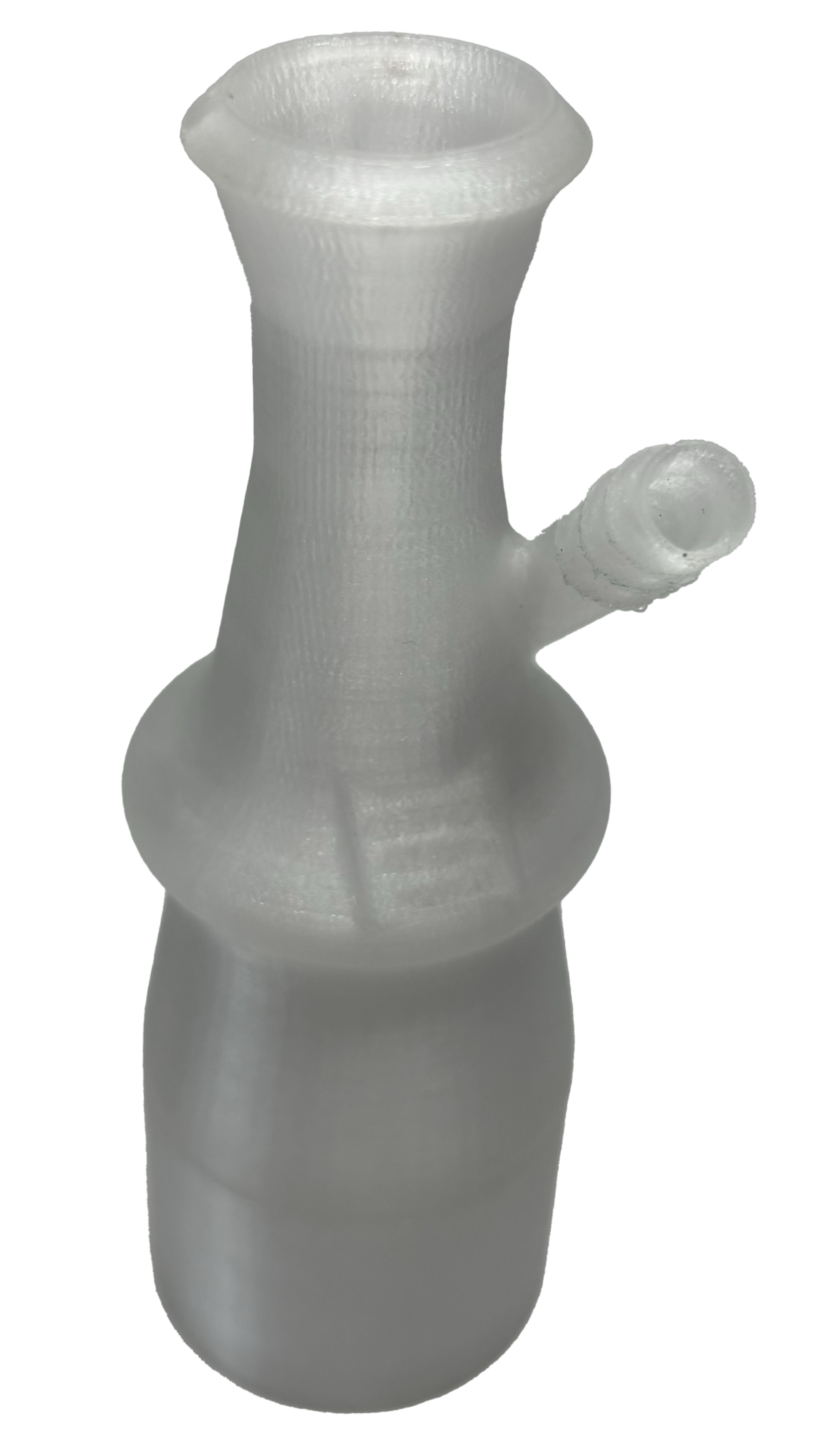
- Example of a Venturi valve: It can also be used as a medical tool, in this case a Venturi valve, used with the Venturi oxygen mask during the COVID-19 period.
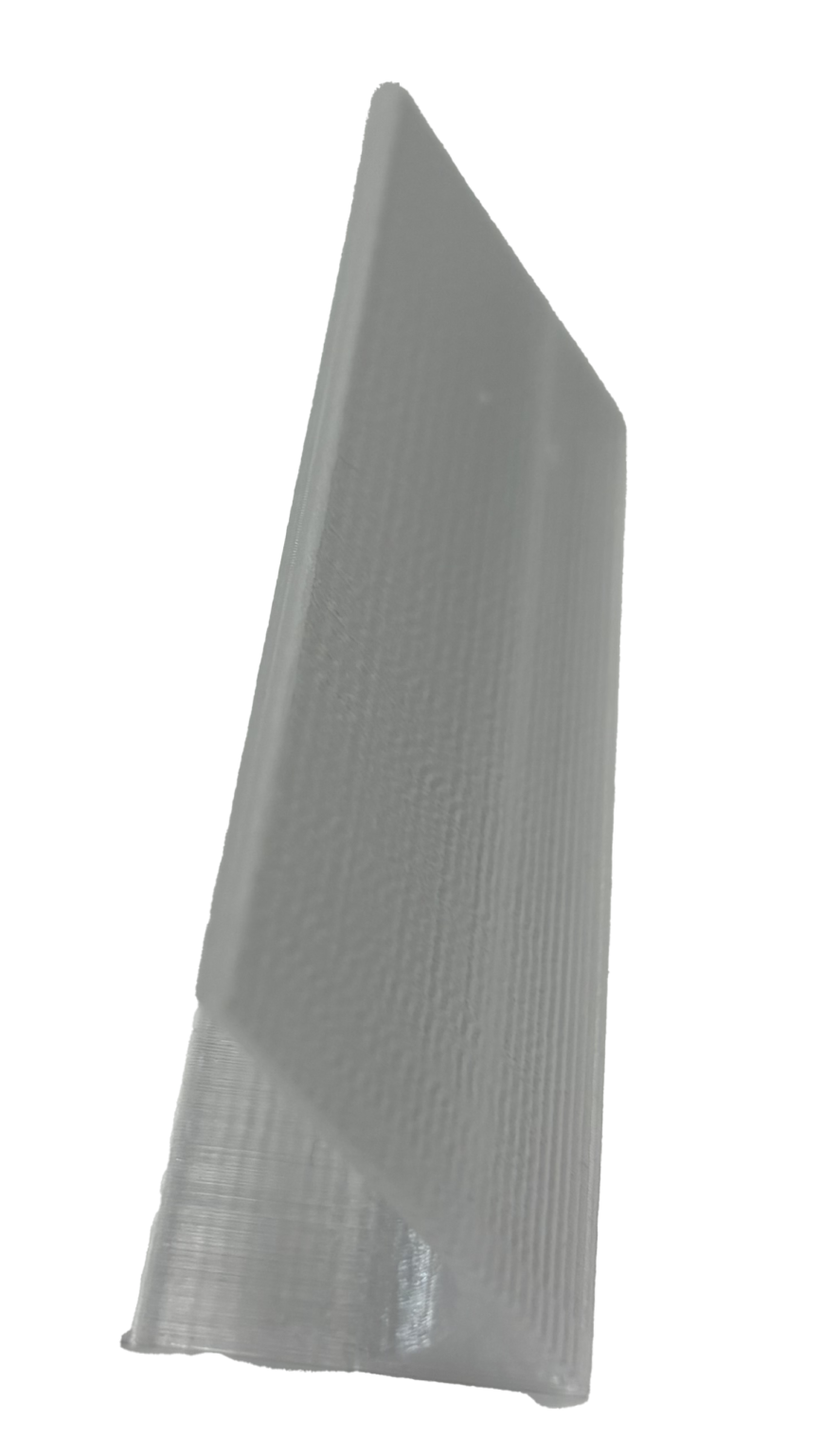
- Example of an object: A wide range of objects are possible, such as a label holder for your events.
An alternative to PETG: ABS
An alternative to PETG: ABS
Although PETG is widely used, ABS remains a robust and established alternative. In fact, ABS can offer superior mechanical strength in certain applications.